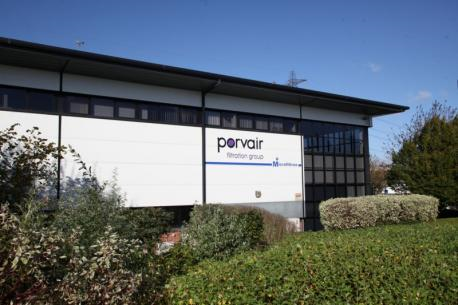
Porvair provides customer-engineered filtration systems.
The Fukushima Daiichi accident of March 2011 dramatically re-shaped the future of nuclear power across the globe and prompted an extensive review of reactor safety equipment.
Fukushima was a catastrophic failure, resulting in a meltdown of three of the plant's six nuclear reactors. It led to the Tokyo Electric Power Company taking the majority of the responsibility for the disaster due to inadequacies with their equipment and safety provisions. Three investigations into the Fukushima disaster agreed that the catastrophe was man-made.
Fission products
A focus of the subsequent multi-national review effort has been an investigation into containment venting systems, which retain fission products in the event of a nuclear accident. More particularly, they aim to prevent primary containment over-pressurisation; minimise radioactive releases and decrease land contamination.
Naturally, in order to avoid significant and dangerous pressure increases and hydrogen accumulations, the containment must be vented by some mechanism.
However, lessons are being learned and precautions taken to improve the safety of these systems. Demand for black box solutions to mitigate this risk is high and several nuclear power plants currently in operation have been, or are in the process of being, retrofitted with containment venting systems.
Nevertheless, engineered solutions, tailored to specific plant requirements must also be strongly considered. At Porvair, we believe that the effective depressurisation of reactor containments, following severe accidents, can only be achieved if the exact conditions inside the containment are known and equipment designed specifically to meet the needs of that event can be installed.
Process conditions
Something that has grown increasingly clear from the enquiries received by Porvair Filtration Group associated with containment venting, is that the original source term, or the set of process conditions associated with a severe accident, varies widely with each enquiry, to the extent to which we are led to ask the question, ‘If you cannot define your problem, how can you have a defined or off-the-shelf solution’.
The lack of an accurate source term as a basis to define the equipment’s performance requirements demonstrates, we believe, that no single catch-all solution will meet the many conflicting and often mutually exclusive demands that a severe accident can place upon any mitigating equipment.
Looking at the issues collectively, and drawing on analysis of historic events, our concern over the use of standard pieces of equipment as the ‘solution’ to the filtered containment issue has merit. However, it is essential that problems are correctly defined.
Porvair are industry leaders in filtration and separation.
Potentially catastrophic
To reiterate, it is not possible to have an answer and provide a solution if the question is not defined. For example, variables such as particle size of solids generated in primary containment during extreme accident scenarios are as yet unknown. Therefore, to suggest that standard equipment can hold the answer is misleading at best and potentially catastrophic at worst.
While there are several different standard configurations of Filtered Containment Venting Systems in use today, many of them utilise, to some extent, fibrous stainless steel filter media for the retention of fine, dry particulate.
During severe accident scenarios, such systems can be quickly affected by variations in aerosol particle size to name just one of a variety of critical parameters, resulting in rapid blinding of the filter media which could potentially rupture and release active particulate.
A thorough understanding of anticipated particle size distribution and bulk densities is necessary to properly model and mitigate the challenges of a design basis or accident, such as was experienced at Fukushima.
Fundamentally, it is necessary to better define the challenges faced by modern Filtered Containment Venting Systems. These challenges are significant; to underestimate the danger is to make a severe mistake, and upgrading venting systems is a wise investment.
Given that it can cost billions to build a nuclear power station, the monetary cost of an engineered Filtered Containment Venting Systems is insignificant, particularly when viewed in light of public safety.


